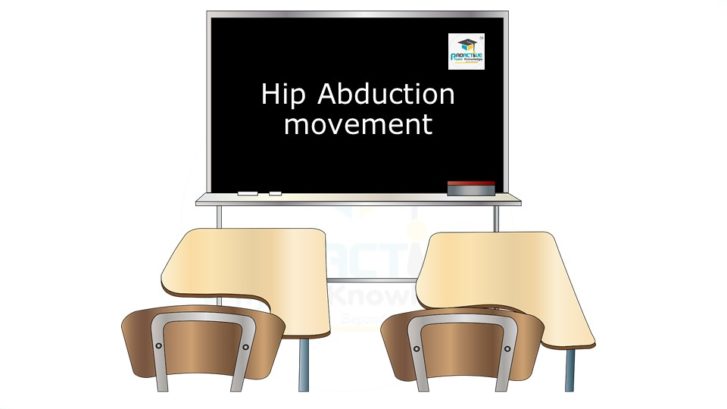How an External Rotation leg allows the quadriceps to create a hip abductor moment?
Here, we make you understand hip abduction movement in simple way. We oftnely talked about movement pattern.
When you are observing someone from behind and observe that your patient calcanum adduct as they get to terminal stance and pre swing (just before they toe off),sometimes it called adductor twist.
How can the quadriceps be involved?
We know that the quadriceps has four parts, the vastus lateralis, vastus intermedius and vastis medialis and the rectus femoris.
The rectus femoris has two attachments. The Straight head at the anterior inferior iliac spine and the reflected or posterior head.The distal attachment, after blending with the quadriceps is into the patellar tendon and ultimately the tibial tuberosity.
The rectus femoris is an accessory hip flexor and knee extensor. It is not normally a prime mover for either of these motions. It’s amount of action depends on the position of both the knee and hip. When the knee is flexed, the rectus femoris has less mechanical advantage, because it is placed in a lengthened position. same things happen if the hip is extended position. It will be shortened if the hip is flexed and if the knee is extended at the same time, will have a mechanical disadvantage.
let`s see the direction of each of the heads.
The “straight” head actually runs more obliquely from lateral to medial from its proximal attachment (AIIS) to the distal attachment (blending with quadriceps and patellar tendon); the refelected head runs a similar course, but not as oblique. If you were to externally rotate the thigh (remember, some folks may have an externally rotated foot due to external tibial torsion), it would actually give these heads more mechanical advantage (when the knee is relatively extended, such as at heel strike/ initial contact and toe off/ pre swing) as abductors (remember to think from the ground up, closed chain, so the distal attachments are acting more like the origin); thus, the abductor moment we have talked about.
let`s dive deep into hip abductors contribution in stance phase.

the pelvis is a closed system, It is very difficult to stabilize unilateral pelvic motion. The contralateral hip abductors provide the best pelvic lateral stabilization. Such stabilization requires an equal maximum isometric contraction of the bilateral hip abductors.A major function of the hip abductors occurs in the closed kinematic chain: They maintain a level pelvis during unilateral stance.
Functionally, the abductors, mainly the gluteus medius, contracts on the weight-bearing side when standing on one leg. When standing on one foot as during walking,85% often weight of the body, including Hip Abduction tourque and the contralateral lower limb, must be balanced by the hip abductors around the femoral head. In this way, the femoral head is a fulcrum in a first-class lever system. Therefore, the hip abductors provide a primary functional source of control and balance at the pelvis.




Leave a Reply
Want to join the discussion?Feel free to contribute!